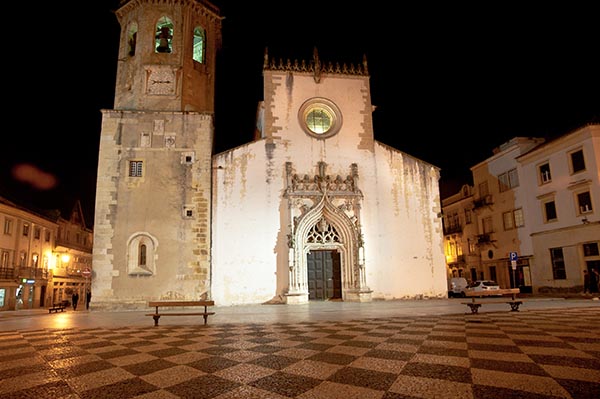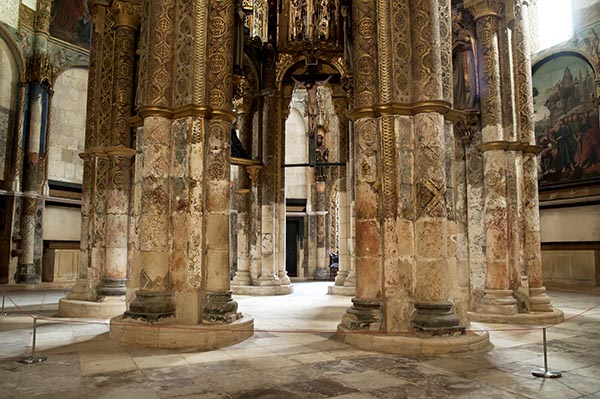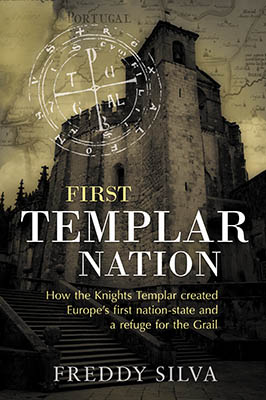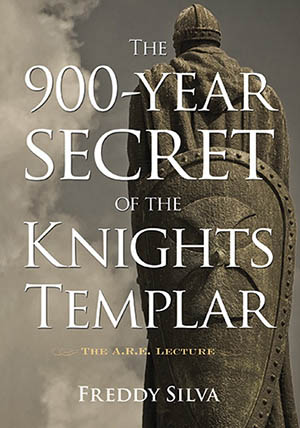It must be stressed that the living resurrection has historically been performed in secret chambers and ancient sacred sites. Science now knows that such ancient temples are found at the intersection of the Earth’s electromagnetic pathways. This concentrated energy is known to stimulate areas of the brain that lead to altered states. Such a spiritual technology is a pre-requisite for inducing the voluntary near-death experience that sends the candidate on a shamanic, out-of-body journey. It was the key ingredient in living resurrection ceremonies. And virtually every site won by the Templars was an ancient sacred site, typically dedicated to Isis or her regional doppelganger.
As a Templar knight, king Afonso Henriques would have been privy to the Templars’ spiritual teachings and the attainment of this inner transformation, the Graal, and it merited awarding the order one third of his land, to establish a kingdom within a kingdom. On the king’s charter lies the unusual cross symbol with the anagram PORTUG-R-AL. In Portuguese it reads ‘through you, the Graal.’ Afonso is alluding that the Graal is to be found in this territory, specifically the town of Tomar, particularly when one considers the name is also a metaphor. In Portuguese it means ‘to drink, to imbibe’, and in esoteric circles, an initiate of the Mysteries must ‘drink’ the knowledge if it is to be internalized. The successful candidate would complete the final initiation by undertaking a voluntary near-death experience, to be awoken by an adept in the morning and lifted from a figurative grave. At this moment they were declared ‘risen’. This initiation is still performed today by the Templars’ progeny, the Scottish Rite Freemasons.
The Templars left clues that the crypt under the enigmatic rotunda of Tomar was used for such a purpose. If you trace a line through the rotunda to the Templar church of John the Baptist, the line passes through two pillars with the pagan symbols of the dragon and the green man, symbols of rejuvenation, and ends 2000 miles away in the church of Notre Dame du Mont Sion in Jerusalem. If you then take that church plus the other two prime Templar sites — the Holy Sepulchre and Solomon’s stables (where they resided) — this perfect triangle is bisected and the imaginary line ends in Egypt, specifically in the underground chamber called the Osirion, where the oldest resurrection ritual of Osiris was once celebrated.
We are presented here with the intriguing possibility that the Templars placed the Graal in Tomar. All these centuries, while we’ve focused on their exploits in Jerusalem and France (and to some degree in Britain), like the smokescreen myth of nine knights protecting a pilgrim trail, the stories have distracted our gaze away from the main accomplishments taking place in this remote country they created before the order itself was made official.
It is indeed an incredible coincidence that just as the Templars are erecting their mysterious rotunda in Tomar, the Graal writer Cretien de Troyes begins writing his famous opus. In the story, the Graal rests on a salver, a ceremonial silver tray. One has to wonder, then, why the Templars called this round building a charola. Because it literally translates as ‘a salver’ — a most unusual name for a religious building that stands at the crossroads of two electromagnetic lines, and never had an altar or a door.
The Templars, it seems, gave us the answer on a silver tray.
This article is based on Freddy Silva’s book First Templar Nation
Return to Articles



